
Poland history & facts in brief

Links to other pages in my Poland series
Black
Madonna of Czestochowa  Czestochowa
Czestochowa  Gdansk
Gdansk  Krakow
Krakow
Poznan  Oswicim (Auswitz)
Oswicim (Auswitz)  Warsaw
Warsaw

Poland
Excerpted from Wikipedia, the free encyclopedia.
The Republic of Poland is a country located in
Central Europe, between Germany to the west, the Czech
Republic and Slovakia to the south, Ukraine and Belarus
to the east, and the Baltic Sea, Lithuania and Russia
(in the form of the Kaliningrad Oblast enclave) to the
north.
The Polish state was formed over a 1,000 years ago under
the Piast dynasty, and it reached its Golden Age near
the end of the 16th century under the Jagiellonian dynasty,
when Poland was one of the richest and most powerful
countries in Europe.
On May 3, 1791 the Sejm of the Commonwealth of Poland-Lithuania
voted for the May Constitution of Poland, the first
written constitution of Europe, and the second in the
world after the Constitution of the United States.
The country ceased to exist soon afterwards for the
123 years, after partitions by its neighbours Russia,
Austria and Prussia.
It regained independence in 1918 in the aftermath of
the First World War as the Second Polish Republic.
Following the Second World War it became a communist
satellite state of the Soviet Union known as the People's
Republic of Poland.
In 1989 the first free elections in Poland's post-World
War II history concluded the Solidarity movement's struggle
for freedom and resulted in the defeat of Poland's communist
rulers.
A new constitution was drafted and the current Third
Polish Republic was established.
In 1999 Poland became a part of NATO and in 2004 it
joined the European Union.
Official Polish name: Rzeczpospolita Polska
Motto: none
Anthem: Mazurek Dabrowskiego
Capital: Warsaw
Largest city: Warsaw
Official language: Polish*
Government: Republic
Independence:
- Declared: 9th century
- Redeclared: November 11, 1918
Area: - Total: 312,685 km² (68th)
- Water (%): 2.6%
Population:
- 2005 est: 38,635,144 (32nd)
- Density: 123.5/km² (64th)
Currency: Zloty (PLN)
Time zone: CET (UTC+1)
- Summer (DST) CEST (UTC+2)
Internet TLD: pl
Calling code: +48
* Belorussian, Cassubian, German and Ukrainian are used
in five communal offices. They are, however, not considered
to be official languages at state level.
Poland's official name in Polish is Rzeczpospolita Polska.
The name of the country, Polska, and of the nationality,
the Poles, are of Slavic origin. A common opinion holds
that the name Polska comes from the Slavic Polanie tribe
who established the Polish state in the 10th century
(Greater Poland).
Their name may derive from the Slavic word pole (field),
or it may come from the tribal name Goplanie - people
living around Lake Goplo - the cradle of Poland mentioned
as Goplanie having 400 strongholds circa 845 (Bavarian
Geographer).
Conventional etymology of the ethnic name of the Poles
relates it more widely to the Polish Polanie, "dwellers
of the field"; pol, "field", analogous
to Russian polyî, "open land", from
Indo-European pelè-, "flat" + -anie,
"inhabitants", analogous to Latin -anus, "originating
from" (please compare Yuriev-Polsky). In old Latin
chronicles the terms terra Poloniae (land of Poland)
or Regnum Poloniae (kingdom of Poland) appear.
Parallel to this terminology, another one, Lechia, came
into use, thought to derive from the tribe name Ledzianie.
It gave rise to an alternative name for "Pole":
Lech, Lechowie in Old Church Slavonic, Lechia, Lechites
in Latin, Lach in Ruthenian, Lyakh in Russian, as well
as to old German Lechien, Hungarian Lengyelorszag, Lengyel,
Lithuanian Lenkija, lenkas and Turkish Lechistan (from
Persian Lehestan.)
History
The Polish nation started to form into a recognisable
unitary territorial entity around the middle of the
10th century under the Piast dynasty. In 12th century
Poland was fragmented into several smaller states, which
were later ravaged by the Mongol armies of Golden Horde
in 1241. Under the Jagiellon dynasty Poland forged an
alliance with its neighbour Lithuania. A golden age
occurred in the 16th century during its union (Lublin
Union) with Lithuania in the Polish-Lithuanian Commonwealth.
The citizens of Poland took pride in their ancient freedoms
and parliamentary system, though the Szlachta monopolised
the benefits thereof. Since that time Poles have regarded
freedom as their most important value. Poles often call
themselves the Nation of the free people.
The Polish-Lithuanian Commonwealth at its greatest
extent
In mid 17th century a rebellion of Cossacks led by Bohdan
Chmielnicki ushered in the turbulent time known as "The
Deluge" (potop). Numerous wars against Ottoman
Empire, Russia, Sweden, Transylvania and Brandenburg-Prussia
ultimately came to an end in 1699. During the following
80 years, the waning of the central government and deadlock
of the institutions weakened the nation, leading to
dependency on Russia.
The Enlightenment in Poland fostered a growing national
movement to repair the state, resulting in the first
written constitution in Europe, in 1791 (May Constitution
of Poland). The process of reforms ceased with the partitions
of Poland between Russia, Prussia, and Austria in 1772,
1793 and 1795; these ultimately completely dissolved
Poland. Poles resented their shrinking freedoms and
several times rebelled against their oppressors ( see
List of Polish Uprisings).
After the Napoleonic wars a reconstituted Polish state,
the Duchy of Warsaw, ruled by the Russian tsar as a
Congress Kingdom, possessed a liberal constitution.
However, the Russian tsars soon reduced Polish freedoms
and Russia eventually de facto annexed the country.
Later in the 19th century, Austrian-ruled Galicia became
the oasis of Polish freedom.
During World War I all the Allies agreed on the restitution
of Poland that United States President Woodrow Wilson
proclaimed in point 13 of his Fourteen Points. Shortly
after the surrender of Germany in November 1918, Poland
regained its independence as the Second Polish Republic.
A new threat, Soviet aggression, arose in the 1919 (Polish-Soviet
War), but Poland succeeded in defending its independence.
The Second Polish Republic lasted until the start of
World War II when Germany and the Soviet Union invaded
and split the Polish territory between them from (September
28, 1939). Poland suffered greatly in this period (see
General Government). Of all the countries involved in
the war, Poland lost the highest percentage of its citizens:
over 6 million perished, half of them Polish Jews. Poland's
borders shifted westwards; pushing the eastern border
to the Curzon line and the western border to the Oder-Neisse
line. After the shift Poland emerged smaller by 76 000
km² or by 20% of its pre-war size. The shifting
of borders also involved the migration of millions of
people – Poles, Germans, Ukrainians, Jews. Eventually,
Poland became, for the first time in history, an ethnically
unified country.
The Soviet Union brought a new communist government
to Poland, analogously to much of the rest of the Eastern
Bloc. In 1948 a turn towards Stalinism brought in the
beginning of the next period of totalitarian rule. The
People's Republic of Poland was officially proclaimed
in 1952. In 1956 the regime became more liberal, freeing
many people from prison and expanding some personal
freedoms. Labour turmoil in 1980 led to the formation
of the independent trade union, "Solidarity",
which over time became a political force. It eroded
the dominance of the Communist Party; by 1989 it had
triumphed in parliamentary elections, and Lech Walesa
a Solidarity candidate eventually won the presidency.
A shock therapy program during the early 1990s enabled
the country to transform its economy into one of the
most robust in Central Europe. Despite the regression
in levels of social and economic human rights standards,
numerous improvements in other human rights standards
occurred (free speech, functioning democracy and the
like). Poland was the first among post-communist countries
to regain pre-1989 GDP levels. Poland joined the NATO
alliance in 1999.
Following a massive advertising campaign by the government
in favour of joining the European Union, Polish voters
voted yes to the EU in a referendum in June 2003. Poland
joined the European Union on 1 May 2004.
Politics
Poland is a democratic republic. Its current constitution
dates from 1997.
Administration of Poland
Poland is sub-divided for administrative purposes into
16 administrative regions known as voivodships.
Geography
The Polish landscape consists almost entirely of the
lowlands of the North European Plain, at an average
height of 173 metres, though the Sudetes (including
the Karkonosze) and the Carpathian Mountains (including
the Tatra mountains, where one also finds Poland's highest
point, Rysy, at 2,499 m.) form the southern border.
Several large rivers cross the plains; for instance,
the Vistula (Wisla), Oder (Odra), Warta the (Western)
Bug. Poland also contains over 9,300 lakes, predominantly
in the north of the country. Masuria (Mazury) forms
the largest and most-visited lake district in Poland.
Remains of the ancient forests survive: see list of
forests in Poland. Poland enjoys a temperate climate,
with cold, cloudy, moderately severe winters with frequent
slop-dropping and mild summers with frequent showers
and thunder showers.
Economy
Since its return to democracy, Poland has steadfastly
pursued a policy of liberalising the economy and today
stands out as one of the most successful and open examples
of the transition from communism to a market economy.
Zloty, the nation's currency.
Poland has a large agricultural sector of private farms,
that could be a leading producer of food in the European
Union now that Poland is a member.
Although the Polish economy is currently undergoing
an economic boom there are many challenges ahead.
Transportation
By Western European standards, Poland has a relatively
poorly developed infrastructure of roads, expressways,
highways, waterways, and railroads. Total length of
Railways in Poland is 23,420 km. The total length of
Highways/Expressways in Poland is 364,657 km. There
are a total of 9,283,000 registered passenger automobiles
in Poland, as well as 1,762,000 registered trucks and
busses (2000).
Poland has 8 major airports, a total of 122 airports
and airfields, as well as 3 heliports. The total length
of navigable rivers and canals is 3,812 km. The merchant
marine of Poland consists of 114 ships, with additional
100 ships being registered outside the country. Poland's
principal ports and harbours are Gdansk, Gdynia, Kolobrzeg,
Szczecin, Swinoujscie, Ustka, Warsaw, and Wroclaw.
Telecommunication and IT
In Poland, the share of telecom sector in GDP generation
is 4.4% (end of 2000 figure), when compared to 2.5%
in 1996. Nevertheless, despite high expenditures for
telecom infrastructure (the coverage increased from
78 users per 1000 inhabitants in 1989 to 282 in 2000)
the infrastructure is still underdeveloped. Density
of stationary network in Poland vary from region to
region, with rural areas lagging behind.
Demographics
Poland formerly played host to many languages, cultures
and religions. However, the outcome of World War II
and the following shift westwards to the area between
the Curzon line and the Oder-Neisse line gave Poland
an appearance of homogeneity. 36,983,700 people, or
96.74% of today's population considers itself Polish
(Census 2002), 471,500 (1.23%) declared another nationality.
774,900 people (2.03%) didn't declare any nationality.
The officially recognised ethnic minorities include:
Germans, Ukrainians, Lithuanians, Jews and Belorussians.
The Polish language, a member of the West Slavic branch
of the Slavic languages, functions as the official language
of Poland. Most Poles adhere to the Roman Catholic faith,
though only 75% count as practising Catholics.
Culture
The style and personality of Polish life has been shaped
over a thousand years. The national culture developed
at the crossroads of the Latinate and Byzantine worlds,
in continual dialogue with the many ethnic groups in
Poland. The people of Poland have always been hospitable
to artists from abroad, and eager to follow what was
happening in other countries. In the 19th and 20th centuries
Poles' concentration on cultural advancement often took
the place of political and economic activity. These
factors have contributed to the versatile character
of Polish art, with all its complex nuances.
Dialogue and the interpenetration of cultures have been
major characteristics of Polish tradition for centuries.
Customs, manners, and dress have reflected the influences
of east and west. The traditional costumes worn by the
gentry in the 16th and 17th centuries were inspired
by rich eastern ornamental styles, including Islamic
influences. Polish cuisine and social customs are another
reflection of multifarious trends.
Polish towns reflect the whole spectrum of European
styles. Poland's eastern frontiers marked the boundary
of the influences of Western architecture on the continent.
History has not been kind to Poland's architectural
monuments. However, a number of ancient edifices have
survived: castles, churches, and stately homes, sometimes
unique in the regional or European context. Some of
them have been painstakingly restored (the Royal Castle
in Cracow), or completely reconstructed after totally
devastation in the Second World War (the Old City and
Royal Castle in Warsaw, the Old Cities of Gdansk and
Wroclaw). Kazimierz on the Vistula is an example of
a well-preserved mediaeval town. Cracow ranks among
the best preserved Gothic and Renaissance urban complexes
in Europe. Polish church architecture deserves special
attention. Some interesting buildings were also constructed
during the Communist regime in the style of Socialist
Realism. Recently, some remarkable specimens of modern
architecture have been erected.
Polish art has always reflected world trends while maintaining
its unique character.
The origins of Polish literature written in the Polish
vernacular go back beyond the 14th century.
Henryk Sienkiewicz, a Nobel prize-winner for his novel
Quo Vadis in 1905, eulogised the historical tradition.
After the Second World War many Polish writers found
themselves in exile abroad, with many clustered around
the Paris-based Kultura publishing venture run by Jerzy
Giedroyc. The group of émigré writers
included Witold Gombrowicz, Gustaw Herling-Grudzinski,
Czeslaw Milosz, and Slawomir Mrozek. Zbigniew Herbert,
Tadeusz Rózewicz, Czeslaw Milosz (Nobel Prize
in 1980), and Wislawa Szymborska (Nobel Prize in 1996)
are among the most outstanding 20th century Polish poets,
novelists and playwrights, which also includes Witold
Gombrowicz, Slawomir Mrozek, and Stanislaw Lem (for
science fiction). Hanna Krall's reportage which focuses
mainly on the war-time Jewish experience, and Ryszard
Kapuscinski's books have been translated into many languages.
External links

This page was retrieved and condensed from
(http://en.wikipedia.org/wiki/Poland) July, 2005
All text is available under the terms of the GNU Free
Documentation License
(see
Copyrights for details).

Hui Chin and I visited
Poland during our 2005 trip in Europe.
We visited Czestochowa, Gdansk, Krakow, Poznan, Oswicim
and the Capital city Warsaw.
The Polish people were mourning the death of the Late
Pope John Paul II, the polish people's "Papa",
at the time of our visit.
R.I.P. our Late Pope John
Paul II.

Some of my photos of Poland.
You can click on
these photos for an enlargement
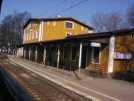 |
 |
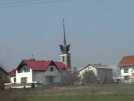 |
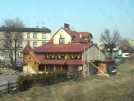 |
| Poland |
Poland |
Poland |
Poland |
Poland trains
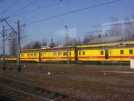 |
 |
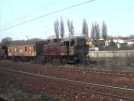 |
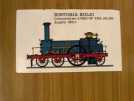 |
| Poland trains |
Poland trains |
Poland trains |
Poland trains |

Links to other pages in my Poland series
Black
Madonna of Czestochowa  Czestochowa
Czestochowa  Gdansk
Gdansk  Krakow
Krakow
Poznan  Oswicim (Auswitz)
Oswicim (Auswitz)  Warsaw
Warsaw

Site
Index
Back to Top
Photos Index
Thanks for coming, I hope you
have enjoyed it, will recommend
it to your friends, and will come
back later to see my site developing
and expanding.
I'm trying to make my pages
enjoyable and trouble free for everyone,
please let me know of any mistakes
or trouble with links, so I can
fix any problem as soon as possible.
These pages are best viewed with monitor
resolution set at 640x480 and kept simple
on purpose so everyone can enjoy them
across all media and platforms.
Thank you.
You can e-mail me at
Webmaster

|